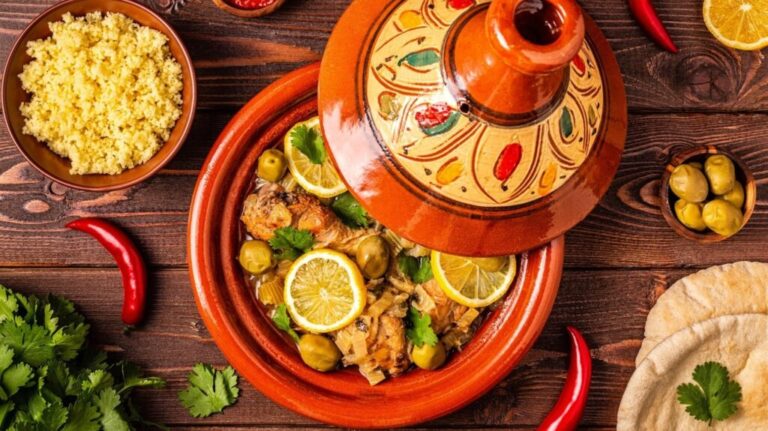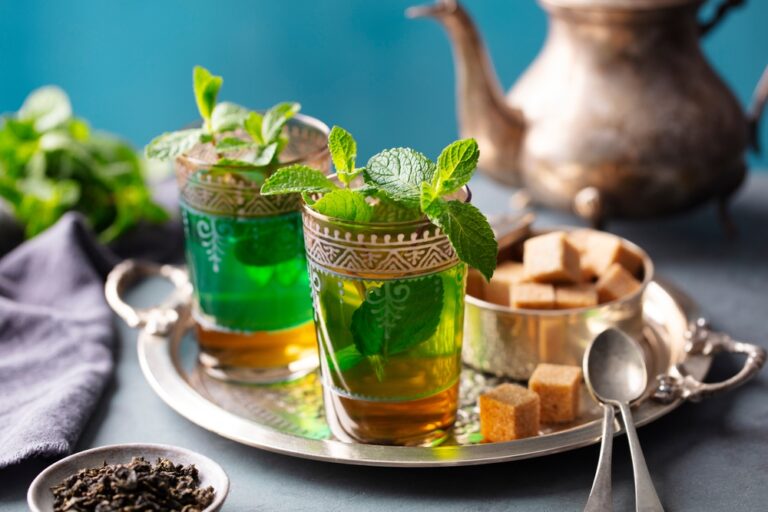Peasant Food vs King Food in Morocco: 7 Extraordinary Differences That Will Amaze You
Morocco’s vibrant cuisine has captivated food enthusiasts worldwide with its aromatic spices, diverse ingredients, and time-honored cooking techniques. When planning your travel to Morocco, understanding the fascinating contrasts between everyday cooking and royal cuisine offers profound insights into the country’s rich cultural tapestry. The divide between Peasant Food vs King Food in Morocco reflects centuries of history, social structures, and culinary innovation that continues to influence modern Moroccan gastronomy.
From the bustling medinas to lavish palace kitchens, Moroccan food tells a story of resourcefulness and opulence existing side by side. This exploration of Peasant Food vs King Food in Morocco reveals seven surprising differences that showcase how economic status, ingredient availability, and cultural traditions have shaped two distinct yet complementary culinary worlds.

Table of Contents
Understanding Moroccan Culinary Heritage
Morocco’s strategic location at the crossroads of Europe, Africa, and the Middle East has created one of the world’s most diverse and flavorful culinary traditions. The country’s food heritage blends influences from Berber natives, Arab conquerors, Mediterranean neighbors, and Sub-Saharan trade routes. According to <a href=”https://www.unesco.org/en/articles/moroccan-couscous-knowledge-know-how-and-practices” rel=”dofollow”>UNESCO’s cultural heritage documentation</a>, this multicultural foundation created one of the world’s most sophisticated culinary systems.
Throughout history, Peasant Food vs King Food in Morocco developed along parallel yet distinct paths. While royal kitchens benefited from international trade networks and palatial resources, rural and working-class Moroccans crafted ingenious recipes from locally available ingredients. Despite these differences, both traditions follow similar meal structures centered around communal dining, with breakfast (Ftour), lunch (Ghda), and dinner (Asha) serving as daily anchors.
Difference #1: Ingredient Quality and Accessibility
The most fundamental contrast in Peasant Food vs King Food in Morocco begins with ingredients. Peasant cooking relies on locally grown and seasonal produce, legumes, and preserved foods. Common staples include couscous, fava beans, lentils, and preserved lemons – ingredients that store well and provide substantial nutrition.
Royal Moroccan cuisine, conversely, historically showcased rare and expensive elements like exotic fruits, premium nuts, and imported spices. Palace kitchens enjoyed consistent access to high-quality meats, particularly lamb and game birds. The disparities in ingredient accessibility created distinctive flavor profiles that continue to define these culinary traditions for travelers to Morocco today.
Difference #2: Cooking Techniques and Time Investment
Peasant Food vs King Food in Morocco diverges significantly in preparation methods. Traditional peasant cooking prioritizes efficiency and practicality – one-pot dishes that can simmer unattended while other work continues. The iconic clay tagine exemplifies this approach, allowing slow cooking with minimal fuel consumption.
Royal cuisine embraces elaborate, multi-step preparation techniques requiring substantial time and labor. Palace dishes might involve multiple cooking methods – steaming, frying, and baking – for a single recipe. The labor-intensive bastilla (layered pastry with meat, eggs, and almonds) exemplifies royal cuisine’s complex approach, often requiring specialized kitchen staff for different components.
Difference #3: Spice Usage and Flavor Profiles
When exploring Peasant Food vs King Food in Morocco, spice utilization reveals telling differences. Everyday cooking employs fundamental spice blends like ras el hanout in modest quantities, focusing on preserving and enhancing natural flavors rather than masking them.
Royal Moroccan cuisine celebrates elaborate spice combinations featuring premium ingredients like saffron – historically worth more than gold. Palace dishes layer multiple spice profiles to create sophisticated taste experiences, often incorporating expensive imports like black pepper, cinnamon, and nutmeg. Regional variations further complicate this picture, with northern cuisines showing Spanish influences while southern dishes incorporate Saharan flavors.
Difference #4: Presentation and Dining Rituals
The contrast between Peasant Food vs King Food in Morocco extends beyond taste to presentation and dining customs. Traditional households serve meals from a central communal dish, typically the cooking vessel itself, with diners gathered around using bread rather than utensils. As noted by the <a href=”https://www.visitmorocco.com/en/food-drinks” rel=”dofollow”>Moroccan National Tourist Office</a>, these communal eating practices strengthen family bonds and community connections.
Royal dining elevates presentation to an art form. Palace meals feature elaborate serving vessels, precisely arranged garnishes, and ceremonial serving practices. Each dish arrives according to strict protocols, with servants presenting foods in order of importance. Despite these differences, both traditions prize hospitality – though expressed through different means, the value of honoring guests transcends social boundaries.
Difference #5: Meat Consumption and Protein Sources
Protein sources mark another significant distinction in Peasant Food vs King Food in Morocco. Rural and working-class cuisine historically relied on plant-based proteins – chickpeas, lentils, and broad beans – with meat reserved for special occasions like religious holidays and family celebrations.
Royal kitchens centered meals around premium meats, particularly lamb, poultry, and game. Multiple meat dishes might appear in a single royal meal, often prepared in different styles. This contrast reflects economic realities but also created distinctive culinary approaches that modern travelers to Morocco can still experience in different eating establishments.
Difference #6: Sweet and Savory Combinations
The interplay between sweet and savory flavors differs dramatically in Peasant Food vs King Food in Morocco. Traditional rural cooking typically separates sweet and savory elements, with simple honey-based desserts following savory main courses.
Royal Moroccan cuisine famously combines sweet and savory within single dishes – dates with lamb, honey-drizzled meat, and fruit-studded poultry. Access to refined sugar, historically a luxury item, allowed palace kitchens to develop sophisticated desserts featuring layers of phyllo dough, nuts, and honey-based syrups. These contrasting approaches to sweetness reflect both economic disparities and philosophical differences in flavor balancing.
Difference #7: Preservation Techniques and Food Storage
Perhaps most fascinating is how Peasant Food vs King Food in Morocco diverged in preservation approaches. Necessity drove rural communities to develop ingenious preservation methods – salt-curing, sun-drying, fermentation, and oil preservation created distinctive flavors while extending food viability.
Royal kitchens, less constrained by seasonal scarcity, focused on freshness and immediate consumption. When preservation occurred in palace contexts, it emphasized conserving luxury items like fruits in sugar syrup rather than basic survival needs. These different approaches to food longevity created unique flavor profiles that remain central to Moroccan cuisine today.
Modern Interpretations and Tourism Impact
Contemporary Morocco offers travelers opportunities to experience both traditions. Luxury riads and high-end restaurants often revive royal recipes, while street food vendors and family-run establishments celebrate peasant cooking traditions. Food tourism has sparked renewed interest in traditional techniques, with cooking classes allowing visitors to learn firsthand about Peasant Food vs King Food in Morocco. The <a href=”https://www.marrakechfoodfestival.com” rel=”dofollow”>Marrakech Food Festival</a> annually showcases both culinary traditions through demonstrations and tastings.
Some innovative chefs now bridge these traditions, applying royal techniques to peasant ingredients or simplifying palace recipes for modern diners. This culinary evolution ensures that both traditions remain vibrant parts of Morocco’s gastronomic landscape.
Conclusion
The stark contrasts between Peasant Food vs King Food in Morocco reveal much more than cooking techniques – they tell the story of a nation’s history, values, and resourcefulness. From ingredient selection to dining rituals, these seven differences highlight how economic circumstances and cultural traditions shaped two remarkable culinary paths.
For travelers to Morocco, exploring both traditions offers the most authentic and comprehensive food experience. Whether enjoying a home-cooked tagine in a mountain village or sampling multi-course royal cuisine in Fez, these gastronomic traditions provide delicious insights into Morocco’s complex cultural identity.
The enduring legacy of both peasant and royal Moroccan cuisines demonstrates how food transcends mere sustenance to become a powerful expression of cultural heritage – a delicious history lesson awaiting your discovery on your next journey to Morocco.
Additional Resources
For those wishing to delve deeper into Moroccan culinary traditions, consider these resources:
- “Couscous and Other Good Food from Morocco” by Paula Wolfert
- Maison MK Cooking School in Marrakech offers authentic hands-on experiences
- La Maison Arabe Cooking Workshops provides excellent classes for beginners
- The Moroccan Culinary Arts Museum in Fez showcases historical cooking implements
- Specialized food tours in Casablanca focusing on regional variations
- Check our Complete Guide to Moroccan Spices for more insights
- Learn about Traditional Cooking Methods in our detailed guide
- Want more culinary adventures? Read our article on Best Food Markets in Morocco
For an academic perspective on Moroccan culinary history, the <a href=”https://www.jstor.org/stable/25758496″ rel=”dofollow”>Journal of North African Studies</a> offers excellent research papers. The <a href=”https://www.moroccoworldnews.com/food” rel=”dofollow”>Morocco World News Food Section</a> provides current trends in Moroccan cuisine.






